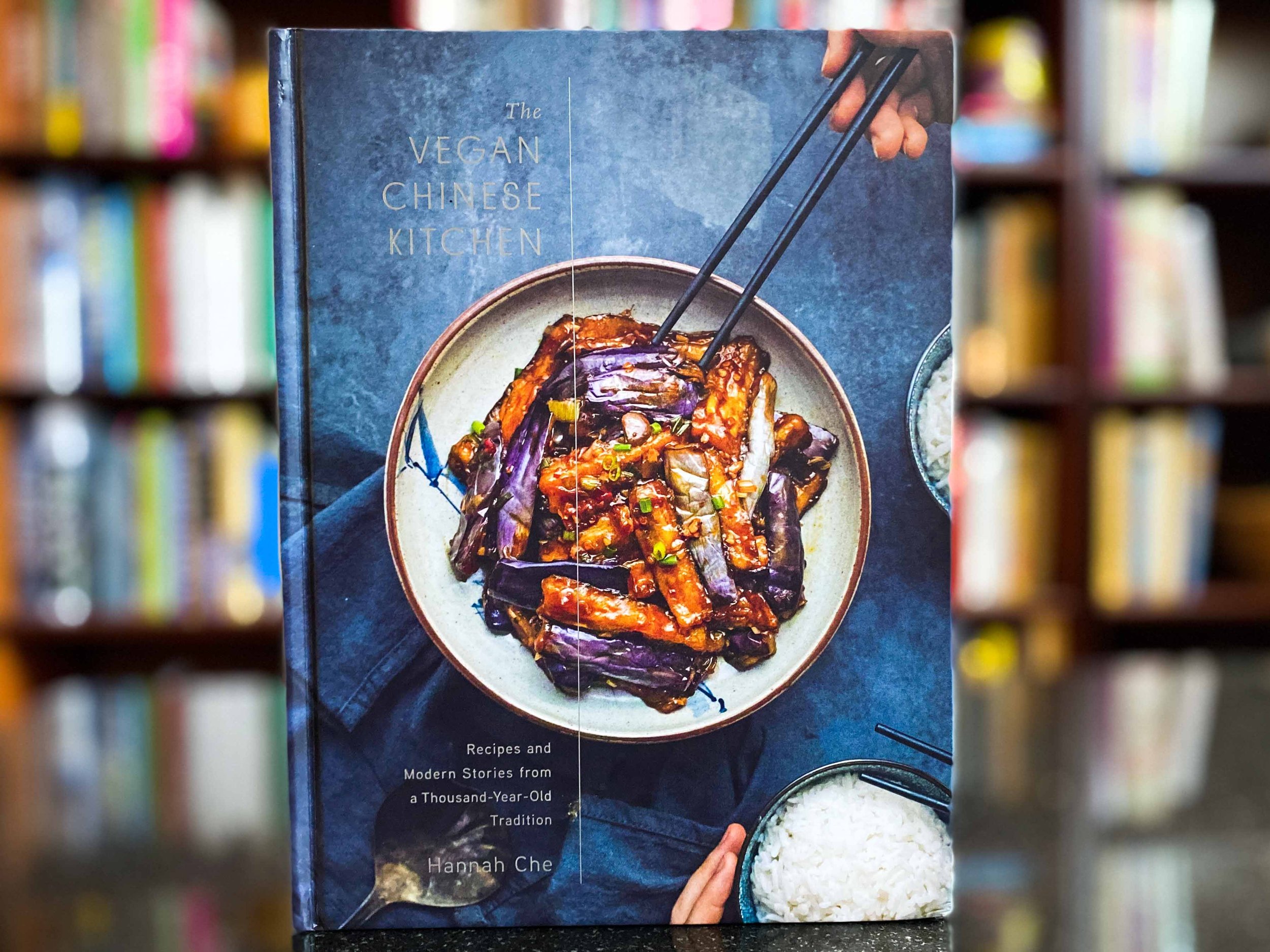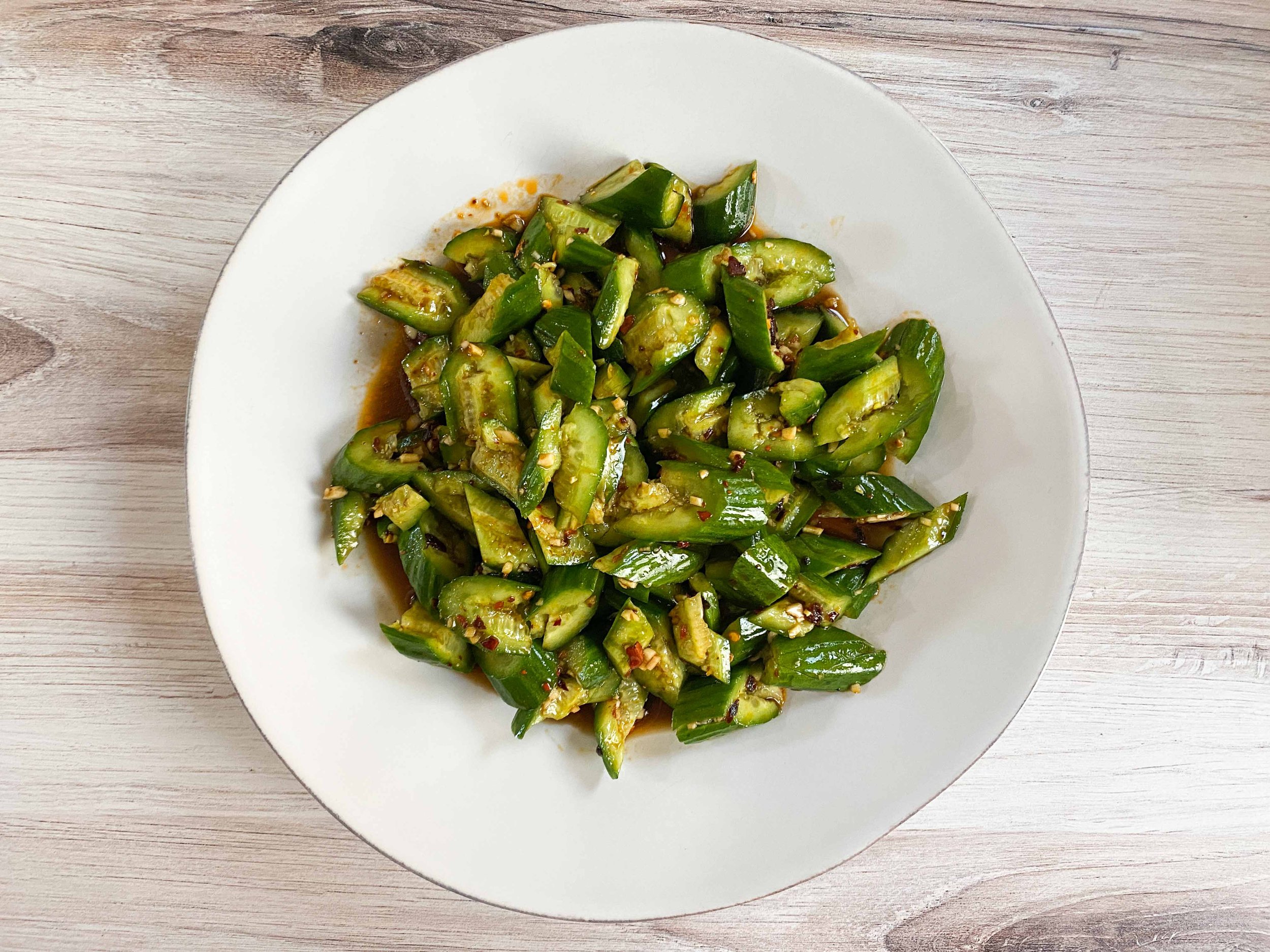By Leslie Brenner
The Vegan Chinese Kitchen: Recipes and Modern Stories from a Thousand-Year-Old Tradition, by Hannah Che, Clarkson Potter, 2022, $35
Last year, we included Hannah Che’s The Vegan Chinese Kitchen in our Best Books of 2022 roundup, having pored through its recipes, read Che’s story, marveled at her exquisite photos (yes, she does them herself!) and tested one of the recipes. Since then, The New York Times chose the book as one of its 10 best cookbooks of the year (the Washington Post had already done the same); a few months later, the James Beard Foundation honored it with a Best Cookbook Award nomination for Vegetable-Focused Cooking.
I’ve finally had a chance to test three more of the recipes, and continue to be thoroughly impressed. The Vegan Chinese Kitchen is a thoroughly wonderful book — one that anyone seriously interested in Chinese cooking and food culture, or vegan cooking (or both) would do well to explore.
Backgrounder
Che, the Portland, Oregon-based creator of the excellent blog The Plant-Based Wok, was raised in Detroit, Michigan, by Chinese immigrant parents; she founded the blog when she was in college at Rice University in Houston, Texas. Having fallen in love with plant-based cooking, she worried that her vegan lifestyle was at odds with her Chinese culture, but in time she came to understand much of Chinese cooking is “inherently plant-based,” and in fact offered her a way to connect in a deeply meaningful way with her heritage. After graduate school (in piano) she left for China, where she studied at the only vegetarian cooking school in the country, in Guangzhou. China. There she immersed herself in zhai cai, the plant-based cuisine with centuries-old Buddhist roots that emphasizes umami-rich ingredients. She had been to China before (with her family), and has returned since; along the way she interned at a renowned tofu restaurant and taught English in Taiwan — soaking up foodways everywhere she went.
Why We Love It
The Vegan Chinese Kitchen is a beautiful book in every way, and Che is a wonderful story-teller. Even if you’re tempted to skip the intro, don’t — in the course of its six or seven pages, Che manages to convey a life-lesson about mindful cooking and the Chinese spirit that’s truly inspiring.
Following that is a useful roadmap about how to create a vegan (or really any) Chinese meal: “you serve enough rice for everyone to eat their fill, along with a spread of accompanying dishes.” The rule is to plan one dish per person, plus one extra, and “aim for a variety of textures, tastes and colors” — and cooking methods. Noodle dishes or other one-pot meals are the standalone exceptions.
If, like me, you’re attracted to cookbooks that open up cultures from within and help you better understand something deep about that culture, The Vegan Chinese Kitchen delivers.
How to Kick Off a Chinese Vegan Meal
Two recipes that Che characterizes as popular appetizers in restaurants in China caught my eye. One is Blanched Spinach with Sesame Sauce — I’ll make that soon. Another is Smashed Cucumber Salad, which Che calls “one of the most ubiquitous Chinese starter dishes.” About a decade ago, the dish was super trendy stateside. I hadn’t made it in some years, and Che’s version (a particularly good one) is a reminder of why it’s so appealing: It’s craveable, crunchy, vinegary, delicious and quick to achieve.
RECIPE: Smashed Cucumber Salad
Let Us Cook the Salad, Shall We?
Che’s photo of Blanched Lettuce with Ginger Soy Sauce was the image that first grabbed me hard when I cracked open the book: I had to make it. (Her photo is a lot nicer than mine.)
Skeptical about cooked lettuce? Che was, until she learned that “Chinese cooks treat lettuces like any other leafy green” and tried dishes like this one.
Once you blanch the romaine leaves, the sauce comes together in a flash. Put them together, and you’ve got something simple and fabulous.
You Want This in Your Fridge
Here’s another crave-able, zingy one. Che writes in her headnote that she often makes a big batch of Napa Cabbage and Vermicelli Salad to enjoy for weekday lunches. I’ve taken her suggestion and wholeheartedly recommend it.
RECIPE: Napa Cabbage and Vermicelli Salad.
One of Che’s Personal Faves
Che’s chapters on Tofu and Tofu Skin are particularly compelling, not only for the recipes, but also for the history and discussion of the culture around it. Before living in China and learning how it’s traditionally made, Che had viewed tofu — as many Chinese people do — as an inferior food. “It’s a cheap, common food in China,” she reflects, “not as refined or exalted in tradition as it is in Japan, where tofu, brought over by monks, first entered as a temple delicacy for the samurai class.” That all turned around for her the more she dove into the culture — including her internship with a tofu master.
I swooped in on one of the humbler recipes because Che wrote in her headnote that she makes it probably three or four times a week. “The easiest way to cook tofu,” she writes in the headnote, “is to quickly blanch it, then season with salt and sesame oil and fold in a handful of finely chopped scallions or fresh herbs.” It’s a preparation known as liangban. This was very good as written, and I’ll definitely be riffing on it for years to come.
RECIPE: Hannah Che’s Fragrant Dressed Tofu
Still Wanna Make
So many dishes! Blanched Sweet Potato Greens (which Che says are available in many Asian supermarkets, though I’ve never noticed them) with Crispy Shallots. Stir-Fried Diced Choy Sum and Tofu. Stir-Fried Water Spinach with Fermented Tofu (Che calls fermented tofu “the vegan chef’s secret ingredient”). Slivered Celtuce with Sesame Oil. Stir-Fried Garlic Chives with Pressed Tofu. Clay Pot-Braised Eggplant with Basil. Stir-Fried Potato Threads with Fragrant Chiles. Soft Tofu with Black Bean Sauce. Steamed Tofu Skin with Ginger, Black Beans & Frizzled Scallions. Braised Tofu Skins in Chili Bean Sauce.
So much tofu, so little time, right?!
Oh, more more thing. Only after I my last spate of cooking from the book did I realize that many of the dishes are served room temperature or cold — which means that not only are the great for do-ahead entertaining, but also that they’re great for summer picnics and potlucks. Just in the nick of time!
Go ahead and take the recipes for a spin. If you like them as much as I do, treat yourself to the book. I think you’ll be glad you did.
Here are more stories celebrating Asian culture in honor of Asian American and Pacific Islander Heritage Month:
“Cookbooks We Love: ‘The Woks of Life’ brims with outstanding Chinese and Chinese-American recipes”
“Cookbooks We Love: Hooni Kim’s ‘My Korea’ is a knockout of a Korean cooking primer”
“Cookbooks We Love: The flavors of India’s cultural capital shine in ‘Kolkata’”
“Author Andrea Nguyen brings unforgettable Vietnamese flavor into every home cook’s wheelhouse”
“Sonoko Sakai’s ‘Japanese Home Cooking’ is one of the best new cookbooks to come along in years”





